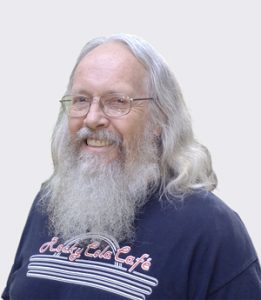Ancient Battle Fought on the Glendale/Burbank Border
This story is a little farther afield than my usual focus on the Crescenta-Cañada area – it focuses on the Glendale/Burbank border. But it’s such an interesting story that I just couldn’t resist. This takes place in the 1840s when the United States was about to take over California and Americans were playing an increasingly prominent role in this area.
In the early 1800s, Mexico had won its independence from Spain. The Mexican territory included California. Not only was California a long way from the seat of power in Mexico but the “Californios” had an independent streak. As well, there was an increasing number of U.S. citizens living here who chafed at Mexico’s rule. In 1842, the Mexican government responded to the independent-minded Californians by sending an authoritarian, Manuel Micheltorena, to serve as governor of California. Just to be extra annoying to the Californians, Micheltorena emptied Mexico’s worst jails to create his own private army, which then marched to Los Angeles. His unpaid army of Mexican cutthroats was allowed to ransack and loot among the Californians, so it wasn’t long before the Californians rose up.
Micheltorena fought down one rebellion in San Jose in late 1844. But in January 1845, a more determined rebel army met Micheltorena’s forces at today’s Glendale/Burbank border. This was the Battle of Providencia (sometimes called the Second Battle of Cahuenga Pass). Micheltorena’s army was supplemented by a force organized by John Sutter (famed of Sutter’s Mill in Northern California), a force consisting of Sutter’s Native American workers dressed up in some old Russian uniforms Sutter had found, along with some American stragglers, making about 400 soldiers.
The rebel army of about the same size consisted of Californios under the command of former governor Juan Alvarado (for whom the street is named). A batch of Americans joined them under Benjamin Wilson (of Mt. Wilson fame). It should be noted the Americans that joined this battle on both sides were strictly there hoping for land grants from whichever side won.
The two armies came together at the edge of the Los Angeles River on today’s Glendale/Burbank border, about where the LA Equestrian Center is on Riverside Drive. When I say “came together,” I mean that figuratively. They stayed well out of musket range of each other. Civilians from Los Angeles came out in droves to watch the battle and arrayed themselves with picnic lunches on the hillsides across the river, where Forest Lawn Hollywood Hills is today.
One side had two cannons. The other side had three. Both sides set their pieces just out of range of the other and fired back and forth for hours. As each side ran low on ammunition, solders ran out in front to grab spent cannonballs and carry them back to fire at the other side. The “brave” soldiers maneuvered their lines back and forth, always staying away from the flying cannonballs. The magnificent cavalry charged and retreated, again always out of range. Other soldiers sheltered under the banks of the river.
A few Yankees walked over to join the spectators on the sidelines. But the majority of the Americans decided among themselves who was most likely to win. They went en masse to the rebel side where Benjamin Wilson commanded the U.S. forces.
Micheltorena saw that the rebel forces had grown considerably with the Americans’ withdrawal from his side. He raised the white flag and surrendered. The total list of casualties? One riderless horse had gotten too close and was killed by a cannonball. That was it.
Micheltorena was shipped back to Mexico and the Californios installed Pio Pico (Pico Boulevard, Pico Rivera) as the new governor. Pico was an interesting character. He was mixed race – African, Native American and Spanish. He successfully transitioned into the American era when they took over the next year. He became the wealthiest man in California but lost it all and ended in poverty.
There is no marker for this insignificant battle. But even today, construction crews and gardeners in the area around the Equestrian Center on Riverside Drive occasionally dig up a cannonball, an ancient memento of the Battle of Providencia.

and loves local history.
Reach him at lawlerdad@yahoo.com.
